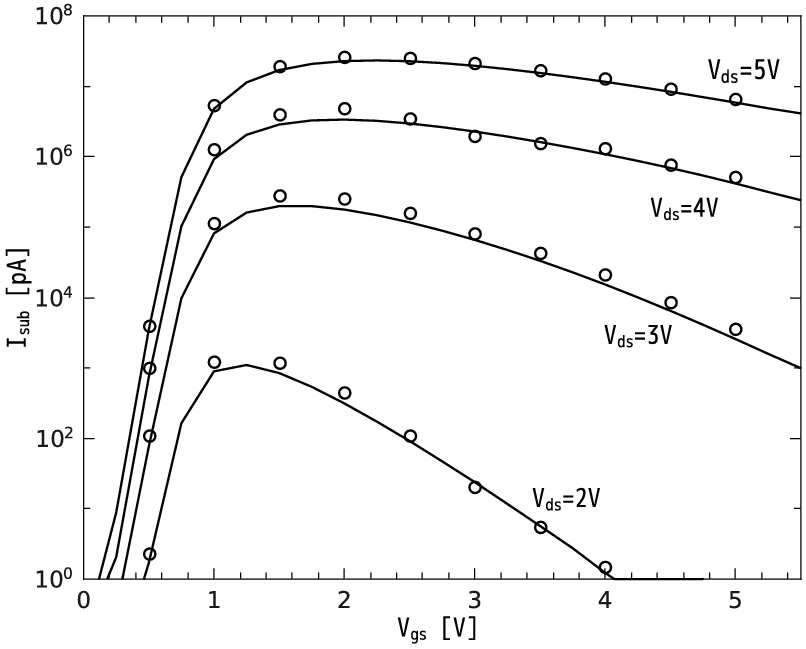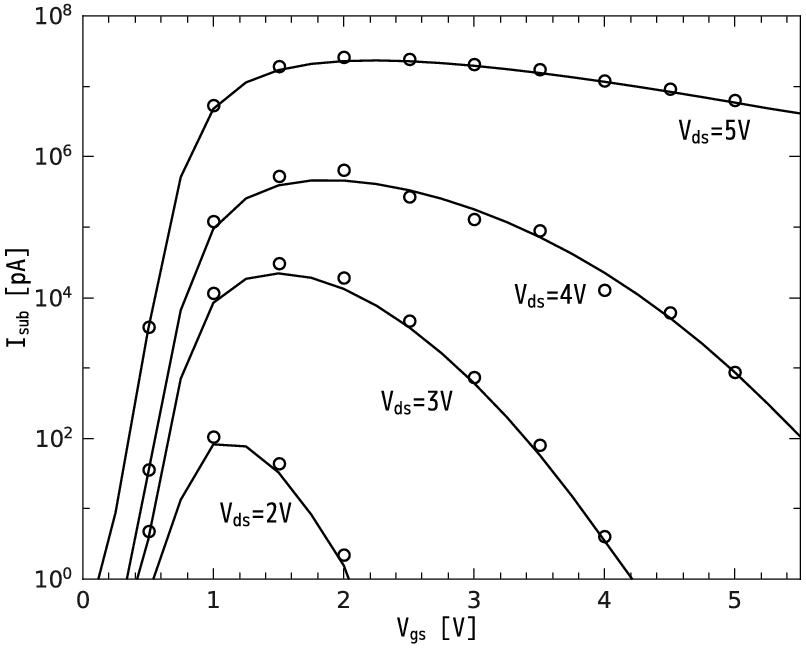Next: 2.5 The Spherical Harmonics Expansion Up: 2.4 Monte Carlo Method Previous: 2.4.1 Multiple Refresh
| ||||||||||||||||||||||||||||||||||||||||||
In the case of a non-self-consistent (NSC) simulation the MC algorithm is performed for a given distribution of potential and carrier concentrations. This distribution can be obtained as the output of a previous self-consistent MC simulation or employing different simulation tools based on the DD or the HD model. As a consequence, the accuracy of the NSC simulation depends on the accuracy of the basic input information. In spite of a wrong reproduction of the low energy carrier distribution, the hot-carrier distribution is well simulated. As it was reported in [154] the NSC approach can be applied to a wide range of HC phenomena.
 (b)
(b) 
|
There exist several advantages to using a NSC method for efficient simulations of HC effects in comparison with a conventional MC simulation scheme [154]. However the main benefit of using NSC is a significant reduction in simulation time for reliable results in comparison with the SC approach. The comparison of self-consistent (SC) and NSC simulation results of a real 5V n-type MOSFET can be performed in order to confirm the validity of the NSC approach. The substrate current due to impact-ionization is a key quantity for monitoring device degradation in nMOSFETs [9,5]. Therefore, efficient simulation of hot-electron effects and especially of the substrate current is the most crucial criterion. The statistics were enhanced with the MR method in the case of the SC simulations as well as in the case of NSC. In Table 2.1 the resulting currents and corresponding simulation times are shown. Both methods demonstrate practically identical results for the substrate current. However, the simulation times differ by about three orders of magnitude. In Figure 2.2a and Figure 2.2b the measured and non-self-consistently calculated substrate current is shown for the 5V n-type MOSFETs with channel lengths of 0.5um and 2.0um, respectively. The simulation results clearly demonstrate a good agreement with the experimental data, i.e. the NSC simulation method is a reliable and efficient tool for hot-carrier simulations.